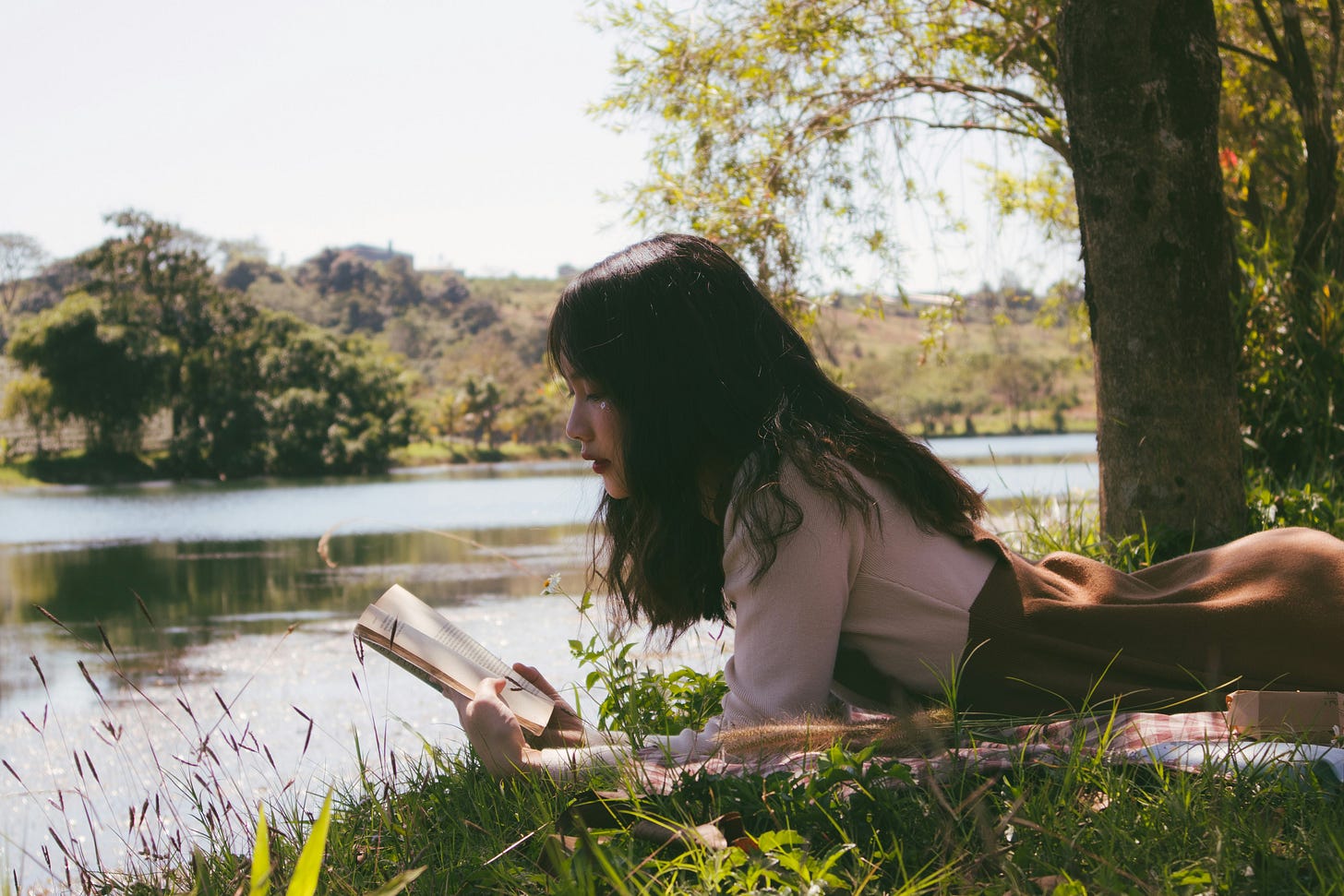Be still and know: you are not alone.
The power of creativity lies in constructing links made of human experience
So. Here we are already, in August with its lazy days and memories of childhoods spent, stomach and elbows on grass, reading and reading and reading, frosted glass of juice at my side. It seemed at first a little sad to choose for the next essay in the Festivals series an event beginning on 31st August; we rush ahead of ourselves too often as it is and if ever there was a month not to rush, it is the month of August, in the Northern Hemisphere at least. Yet, although I am going to take you briefly to days ahead of us, this essay is really about stilling and learning to be with what is and how that relates to creativity.
.
The Jain festival of Paryushan Parva starts on 31st August and lasts for eight to ten days depending on which tradition you follow. The festival’s main theme is common to many festivals: forgiveness and self-development. At first, I thought an interesting way to take this would be to write about the academic studies that show that practising forgiveness increases your capacity for creativity. If you are interested you can read about that here.
However, one less obvious aspect of this festival persisted in my mind. It was like a wasp constantly returning to the rim of that frosted juice glass, hovering then sitting, trying to dip its antennae to the sweetness, shifting away at the waft of a hand, returning only seconds later to feast again. It was this: during Paryushan Parva the Jain monks and nuns who normally live a rarified and peripatetic life, full of silent meditation, come to join with the laity. They all gather together, setting aside the rush of life for a while, and staying still in community. The monks and nuns make themselves available for teaching and question-answering, while the laity, usually fully occupied with secular work, take temporary vows to study.
I began to wonder: if I had access to a set of nuns and monks, what question would I want to ask them?
There might be trivial curiosities about only eating one meal a day or not owning a telephone. I might want to understand more about the rules they live by: the eight doctrines relating to restriction (pravacana-matrka), and the list of six positive obligatory actions (avasyaka) to be done daily.
I would be very tempted to ask: how did you know what to dedicate your life to? How did you choose from all the possibilities for your life? I would envy the certainty with which (I assume) they follow their path, their ability to stick with one routine way of living.
Ultimately, however, all my questions would boil down to this:
Can you teach me how to practise being intensely, actively, consistently, creatively still?
As an artist and writer, one source of the squirmy dissatisfaction that creeps into my studio days is a deep-seated desire to be impactful. Too often this creates a panic to find ways to make art with a message, to say something deep, to be profound. The reality is that I spend days prosaically painting sides of canvases white, deleting the words I have just typed or folding pieces of paper.
Western secular society predominantly associates creativity with making. Creativity is equated with productivity or the thinking that makes productivity more profitable. We might associate it less with factory production and more with artisan handiwork, but we still think first of the resultant objects: vessels, hand-hewn coffee tables, collages, patisserie, wearable art, artists’ books, and the myriad other items we construct and craft. There is, however, another form of creativity that involves not handiwork but the stilling of hands. It is the creation of shifts of perspective.
I once did have the opportunity to sit alone for ten minutes with a member of the clergy. She was a New York accented, yoga teaching, alcoholic, once Vietnam protesting, Peace Core veteran, feminist Reconstructionist Rabbi in the UK for a five-day silent meditation retreat. A total stranger to me, to whom I had not spoken a single word during the first two days of the programme. This was my one moment to break the endless silence to ask a question.
She sat with her body leaning slightly towards me, hands in her lap waiting, exuding gentle invitation. Her whole being was still and waiting without impatience. Without patience even, since there was no sense of my hesitation being something she had to be patient with. It just was. Utterly acceptable. What should I ask? Some perceptive question about mindfulness doctrine? Something to invite her to expand more deeply on her teaching the night before?
I opened my mouth and told her in one sentence of the deepest fear I held. A fear of a future event that was logical, founded in fact, inescapable. A fear that filled my body and whenever I sat on the mat in the meditation hall snatched the breath from my lungs and cast tears down my cheeks. A fear that bled red into dark nights and cast a grim reaper shadow across the days.
How will I survive this?
At first, she said nothing. She sat there and somehow, entirely out of her capacity for internal stillness, she created a remarkable space, a bond, in which we were able to look together at that situation. She didn’t advise me. She didn’t find solutions. She didn’t reassure. She sat and I sat. And then she spoke one truth:
